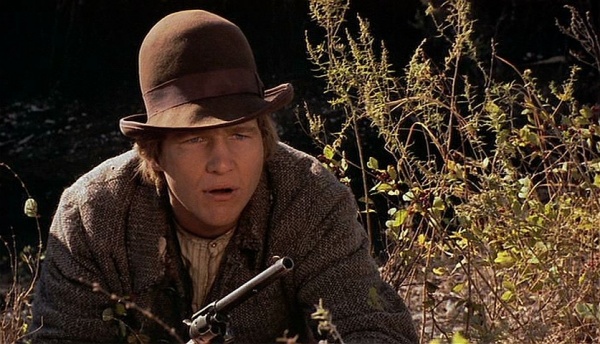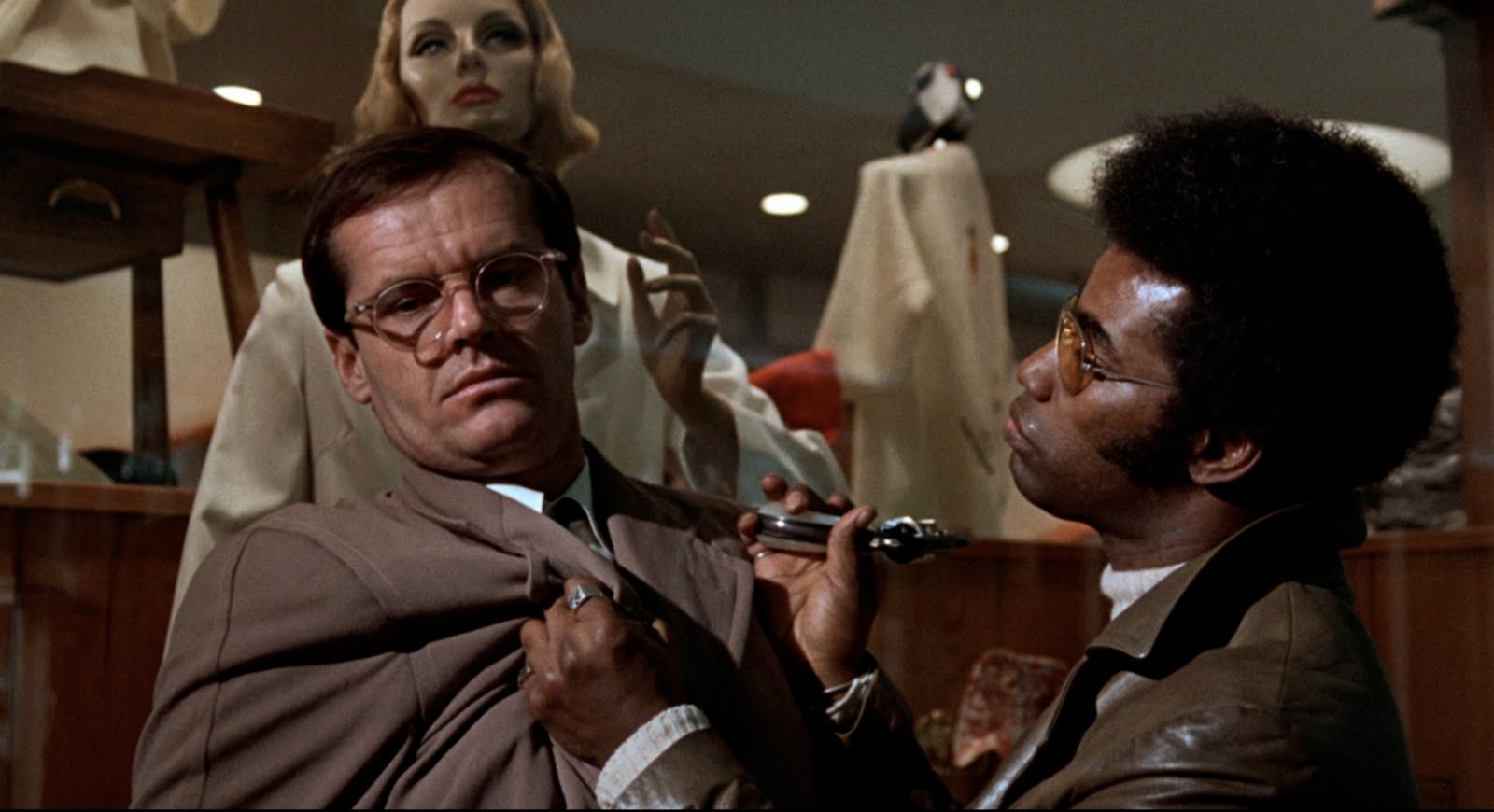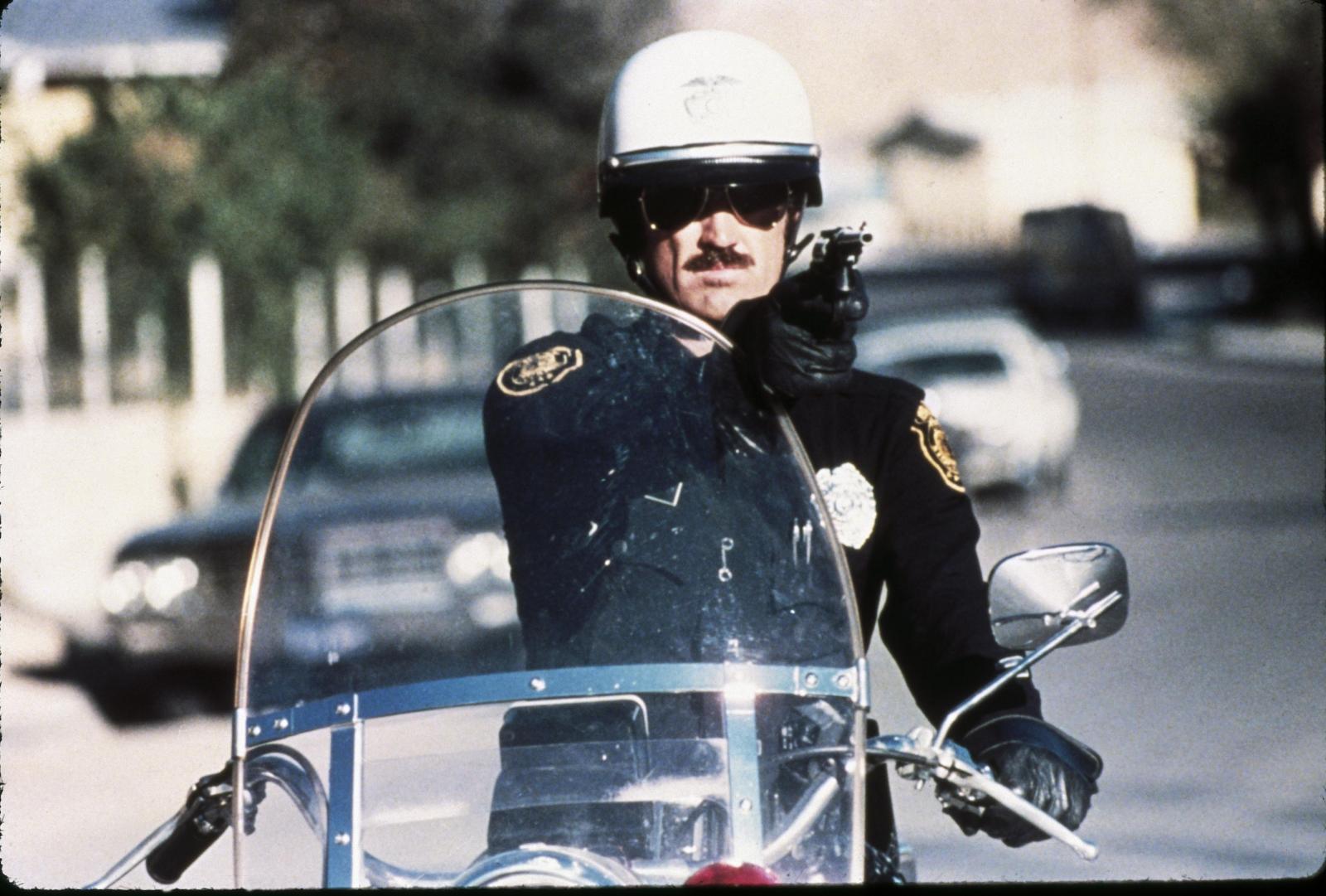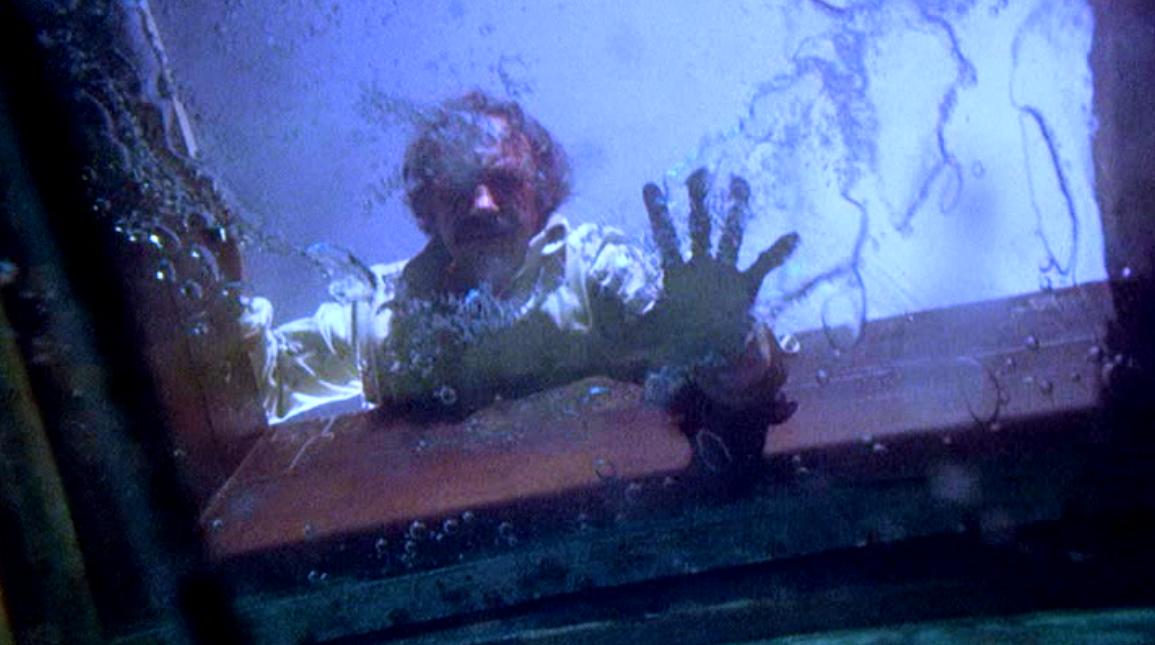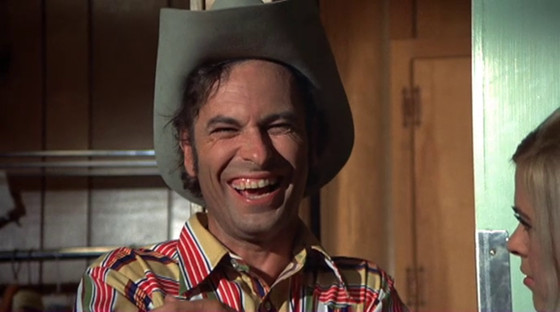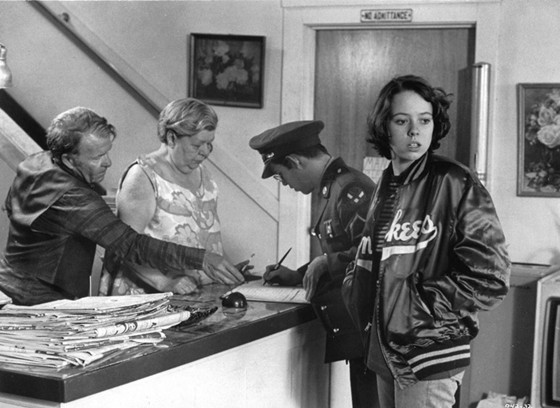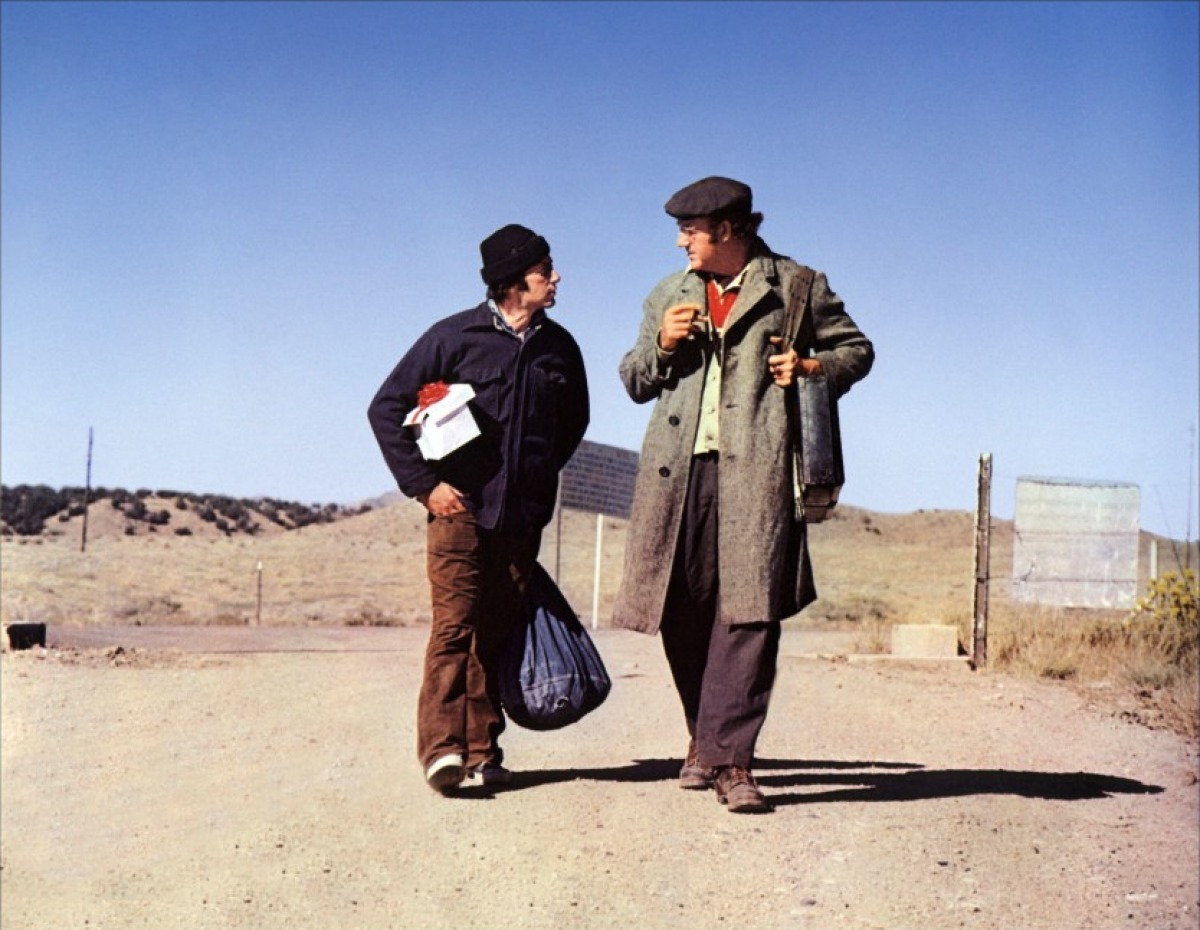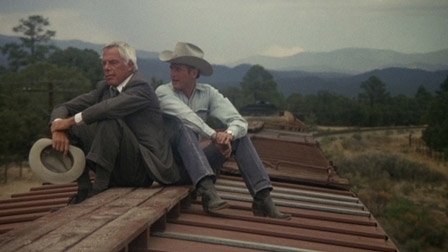8. Bad Company (1972)
The general unhappiness of the late 1960s and early 1970s lead to a large scale reexamining of earlier troubled eras in U.S (this eventually transmuted into the sentimental Nostalgia Boom of the late 70s and 80s). Somehow the knowledge that Americans had survived troubling periods in the past was comforting.
An excellent entry in movement was Bad Company, the first major effort of Altman protege Robert Benton, then on his way to bigger and better. Bad Company examines the phenomena of young men resisting the draft during the Civil War era. Though not generally taught in schools, this was a historical fact and the film, with historical accuracy, sends its main character into the then untamed and lawless west, which turns out to be a scant improvement over the war zone.
Jeff Bridges gives a notable early performance, along with Barry Brown,an interesting, ill fated young actor of the period and a cast of familiar western movie actors. Benton also co-wrote with David Newman, as he did on Bonnie and Clyde, and this film bears a family resemblance to that famous film. The great contribution, though, is submitted by Gordon Willis, whose evocative, atmospheric cinematography renders a wonderful sense of time and place.
9. The King of Marvin Gardens (1971)
Long working in the film industry, actor Jack Nicholson and director Bob Rafelson hit pay dirt with 1970s Five Easy Pieces. This set the stage for their well made but unsuccessful follow-up, which one career survived and the other largely did not.
The downbeat story centers on two brothers from an unhappy background. One is an introverted radio talk show host and the other a live wire hustler forever cooking up some big scheme for the two of them, never with good results. As the story opens, the hustler has concocted a new idea based in a pre-gambling, barren Atlantic CIty.
The brothers are played by Nicholson and Bruce Dern, both of whom would appear to be ideal for the manic brother, especially Nicholson. However, he superbly plays the introverted one with Dern also good as the live wire brother.
Upstaging them both, though, is Ellen Burstyn, who broke free of a blah career when the New Hollywood era dawned. She courageously plays an ageing former beauty queen who becomes violently unstable when her lovely step-daughter (Julie Ann Robinson) starts receiving the attention once given to her.
The film’s box office failure was attributed to the dark plot, yet Five Easy Pieces wasn’t exactly an upper, either. Be that as it may, the film’s artistry in its fine acting, writing, and direction have survived.
10. Electra Glide in Blue (1974)
Actor Robert Blake now has an infamous reputation and he was never, in the best of times, a bulwark of respectability, but he did have talent and, when correctly cast, could deliver extraordinary performances. On film he is best remembered as the tormented mass murderer of 1967’s In Cold Blood, but his second best film performance was surely in this underseen film.
Blake plays John Wintergreen, a traffic cop in rural Arizona. The character has a little problem and little is the key word. He is way shorter than the other guys on the force and,boy, does it bug him. It may also be the reason he can’t get promoted to homicide as he wishes. He gets his chance when he correctly deduces that the apparent suicide of a reclusive old man is murder.
In a more conventional film, he would solve the case, get promoted and the film would have a triumphant ending. That is not the case here. In this film, Wintergreen gets promoted early on, gets demoted due to petty, but understandable, department politics (for reasons involving some blame on the main character’s part), solves the murder but… well, the ending is far from happy or triumphant.
Director William Guerico, a music promoter directing his only film, accurately captures the funky counter-culture vibe of that time, including the volatile, violent quality which is little remembered today. Is it a surprise that that film wasn’t a hit? No, but it’s a shame, if only for its superb use of the intense, manic quality which could make Blake such a riveting actor when he was at his best.
11. Night Moves (1974)
Arthur Penn had been a noted young stage and film director who had been trying, with limited success, to make it in the film world, though he did have an early hit with his transcription of his stage success The Miracle Worker (1963). He and actor Warren Beatty teamed for the completely unsuccessful Mickey One in 1964, a New Wave influenced film widely considered the harbinger of New Hollywood.
They hit pay dirt with the Beatty produced Bonnie and Clyde (1967), a milestone considered the first true New Hollywood film. He kept the rally going with 1969’s counterculture classic Alice’s Restaurant and 1970’s skillful comedic anti-western Little Big Man, receiving Oscar nominations for all three. Then the good times stopped and the key moment that caused that event was the release of Night Moves, an anti-mystery film which doesn’t deserve that onus.
The plot centers on Harry Moseley (the excellent Gene Hackman, the best performer in Bonnie and Clyde), a successful L.A private eye specializing in non-heroic things such as divorce work. He uses his skills to track his wife (Susan Clarke), whom he suspects of having an affair. She is but not with a usual suspect. The other man is a sad, not terribly attractive cripple (Harris Yulin) who listens to her, often about life with her insensitive husband.
Not wishing to deal with any of it (which is quite telling), Moseley accepts an assignment from a wealthy,alcoholic mess of a matron to retrieve her incorrigible runaway daughter (a very young Melanie Griffith in her film debut). He easily enough finds her in the Florida Keys, living with her mom’s old flame (John Crawford) and a woman named Paula (Jennifer Warren), whose role in his life isn’t quite clear.
Before returning the girl, Moseley initiates a brief affair with Paula and comes across a situation which indicates that there may be something criminal going on.
In a standard film, the man would crack a big case, go off with the new woman, and be a hero. This isn’t that film. Moseley’s efforts only ends up resulting in chaos and death. The point of the film is that all of his macho posturing can’t correct everything (or anything much) in such a complex world.
Many complained that the mystery angle is vague and it is for that isn’t the thrust of the film and many didn’t get that. That is just too bad for Penn has created a complex, sharply observed film which not only features the lead’s great work but a superb cast, especially Warren, an attractive and interesting actress who might have been a star if she’d ever found the right vehicle. This should have been that film.
12. Payday (1972)
Despite the silly stage name, Rip Torn is an electric acting presence who can always seem to jolt any scene to life with his portrayal. His prime acting venue has been the stage, where he was an early Method actor (and long married to the late Geraldine Page, one of greatest stage Method actresses).
Perhaps the combination of his intense, often threatening persona and non-matinee idol looks limited his screen and TV careers to supporting roles and villains, but New Hollywood gave him a few lead roles in some smaller, but quality, films. The best of these is Payday, directed by Darryl Duke, best known as a top television director.
Exploring the era’s interest in grassroots culture, Payday tells the story of a few very significant days in the life of Torn’s character,country singer Maury Dann. Dann appears to have been a big star at one time as his career looks to have seen better days. Still, as he tours around in a big, chauffeur driven Cadillac from one club, bar, and radio station to another, he is still living, by his own standards.
He is accompanied by Mayleen (Ahna Capri, who should have had a bigger career), a woman he is obviously “leasing” with his fame and money and also getting together with a number of foolish groupies along the way. The women and those who are unlucky enough to work for him are all treated like dirt, thanks to Dann’s monstrous ego, which is fueled by lots of and alcohol.
However, karma does come back on one and the events of the film transpire to have a number of nasty chickens come home to roost on Dann’s doorstep. (One hilarious scene has Dann going to visit his estranged family to celebrate a son’s birthday, only to be told by his disenchanted ex-wife that, depending on which child he means, he’s either several months too late or too early.)
This film was never going to have been a hit for its too unsparing in its realistic look at celebrity worship and the hollowness of fame. However, it is wonderful that the film exists if only to contain Torn’s commanding performance.
13. Rafferty and the Gold Dust Twins (1975)
It’s a pity that the films in which Alan Arkin really connected with the public either came before or after the New Hollywood era, for his laid back, accepting persona made him a perfect New Hollywood actor. One of the best examples of his work during that era is Rafferty and the Gold Dust Twins, a film idea any executive would be fired for submitting today.
Arkin plays Rafferty, a former marine now working as a driving instructor. To say his life is limited would be a great understatement. He lives in perhaps the second worst apartment in film history (just behind Ratzo’s place in Midnight Cowboy)and does drive the worst car in movie history. His idea of fun is going to a big event at the VFW (and the scene of him doing just that is obviously filmed on a real location with non-actors, indicative of the period).
One day on his lunch break, he encounters a spacey woman (Sally Kellerman, doing her usual), who is loosely allied with a wised-up runaway teen (MacKenzie Phillips, just coming off her career-making turn in American Graffiti). The two women force Rafferty to take them to New Orleans at gunpoint.
The thing is…he isn’t protesting. He understandably doesn’t care about staying in or getting back to California. After a little while, the two women see that he’s not going to run off and they all go exploring together, including a side trip to Vegas. It can’t last but the journey is fun. And that sums up the film itself.
Obviously, this film isn’t going any anywhere great but the journey through off the main highway America is enjoyable. That was one of the hallmarks of the era in general. People were trying to get away from the homogenized, pre-packaged ideas prevalent from the end of World War II until the Vietnam era. Sadly, a lot of moviegoers didn’t get that the movies were trying to do the same and a little film such as this one, directed by Dick Richards, was D.O.A.
14. Scarecrow (1974)
If there were any justice, photographer Jerry Schatzberg would have had a major career in film. As it happened, he made a number of films sporadically over less than two decades’ time. He preferred low key realism and shrew, honest observation in his films, hardly a recipe for large scale success. He was at his best in the New Hollywood era, notably giving Al Pacino his first film lead in 1971’s The Panic in Needle Park, by far the best film of the mercifully short-lived anti-drug cycle.
However, his quintessential New Hollywood picture is Scarecrow, which re-teamed him with Pacino and a typically excellent Gene Hackman. The actors play a pair of hopeful drifters who fall in together. Pacino’s character is just out of the army and is trying to find his estranged wife and their child, which was born in his absence (he doesn’t even know the gender).
Hackman’s erratic and sometimes hostile character is just out of prison and wants to open a car wash in the Midwest. These are such mundane and plausible enough dreams, but any intelligent viewer can see that neither man is going to make what they want come to pass.
The director never allows the characters to make a false move and the milieu of, again, off road America is vividly rendered. Many of the few who saw the film found it aimless, but that is quite appropriate for two aimless characters. The film won at Cannes and that prompted Warner Brothers to give it another release, but all to no avail at the box office.
15. Pocket Money (1972)
Writer-director-producer Terrence Malick is celebrated as one of the most cerebral filmmakers to ever work in Hollywood. However, his beginnings are not that lofty. Early on, actor Paul Newman, producting through his jointed owned company First Artist, hired him to write this film, which has traces of his 1963 hit Hud and was helmed by his Cool Hand Luke director Stuart Rosenberg.
The story is a quirky little comic tale concerning modern day cowboy Jim Kane (Newman), a decent sort with no money and financial responsibilities. His friendly and sympathetic ex-wife (Kelly Jean Peters), now working as a car hop in a dive of a drive-in, kindly but firmly lets him know that she expects him to help by living up to his court-ordered obligations. This leaves him open to the machinations of his slick hustler frenemy Leonard (Lee Marvin, going to town in a rare comedy role).
Leonard, in his big cheap suit and battered cheap old Cadillac, which he thinks makes him look high class, has a cattle rustling scheme going and Jim has to go along. Are there some glimmers of Badlands or Days of Heaven in Malick’s script? No, there’s not a one present. The cast is good and the local color is great but, as with so many other films of the era, it’s more about the journey than the destination.
